For more than fifty years, 24, Galerie de Montpensier, in the 1st arrondissement of Paris, held a special treasure. Hidden from the common eye, fashion connoisseurs gathered here to find rare and historical vintage haute couture pieces. A portion of history rooted in the heart of Paris, its tenure over the years was thanks to the women and men who valued the preservation of the rarities that Didier Ludot had collected since he was 22 years old. As one of the biggest 20th-century haute couture collectors, he was surrounded by la crème de la crème not only of Paris but worldwide; actresses, models, singers, and entrepreneurs all trusted Didier to source the most unique creations. Dior, Saint Laurent, Chanel, Balenciaga… when it comes to fashion, he was the man in charge. His unique eye allowed him to see vintage when other people only saw old.
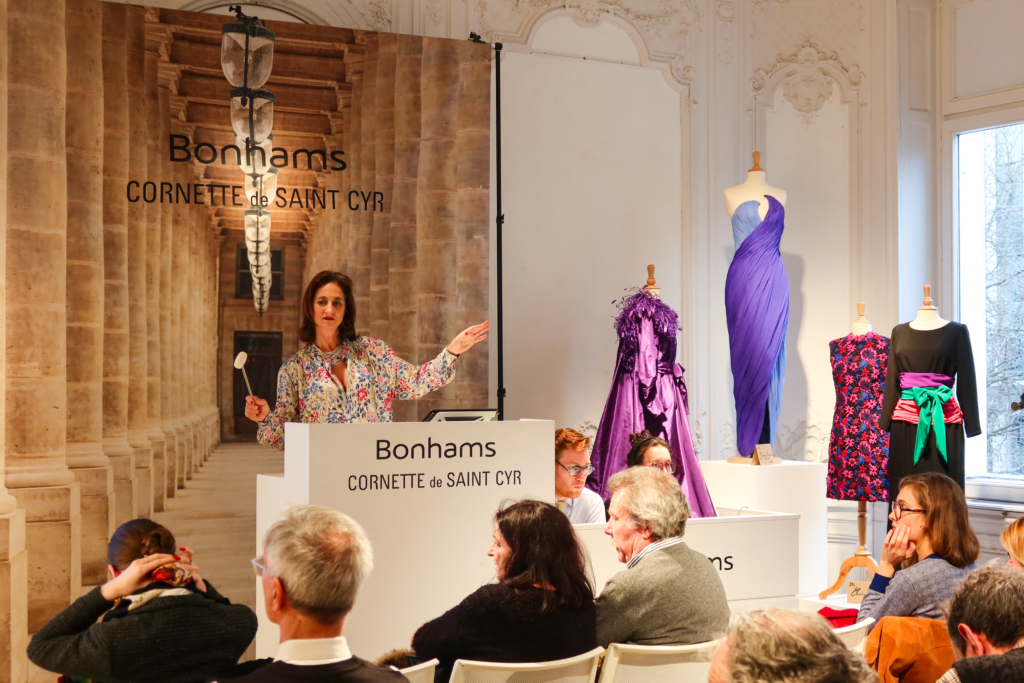
After half a century at the helm of one of the most iconic haute couture vintage stores in the world, Didier has decided to close its doors and give a new life to his collection among museums and the personal collections of private clients. On January 30th, 384 models were auctioned, marking the end of an era—but the beginning of a new one for him and his designs. From a Balenciaga cocktail set, Haute Couture Autumn-Winter 1958, sold for €40,960, to an Yves Saint Laurent Haute Couture Spring-Summer 1992 dress, auctioned for €15,360, this event proves that vintage pieces remain very much alive as long as they carry the legacy and history of the people who wore or created them.
We talked to Didier Ludot about his interest in vintage haute couture, the current state of fashion, and his plans for the future.
Carolina Benjumea: What sparked your interest in vintage haute couture?
Didier Ludot: Since I was really young, I have been passionate about fashion and clothing. It all started with my mother, whom I accompanied to fittings… I turned this hobby into my life. Under the majestic arcades of the Palais-Royal, I created a retro fashion boutique that became the showcase for one of the most impressive Haute Couture collections in the world.
C.B.: In which year did you start collecting, and what was your first piece?
D.L.: I started on April 1, 1974 (it’s not an April Fools joke) by buying retro jewelry. In 1974, at 22 years old, I purchased a 6 m² space in the Palais-Royal area, where I couldn’t even stretch my legs. I sold Art Deco jewelry I had sourced with my mother until women from the neighborhood started bringing me their belongings. I began putting in two or three dresses and some bags in crocodile leather… The boutique became too small, so I bought a shop next door. Then another one, which became specialized in haute couture.
C.B.: The auction, “Le Dernier Passage” includes the last 350 pieces of your collection. Which piece was the hardest to let go of?
D.L.: Bonhams Cornette de Saint Cyr is offering two Dior dresses in the auction: the “Sévillane” and “Coquine”. One day, a lady brought these two dresses, belonging to her grandmother, to the boutique in a plastic bag. I asked her why she had kept just these two, and she told me they had been forgotten in a closet and that her cousin had advised her to go to the Palais Royal, where Dior dresses were repurchased. Unfortunately, she had thrown away many Dior dresses, but I’m happy to have saved these two. At the time, people didn’t realize what they had in their hands.
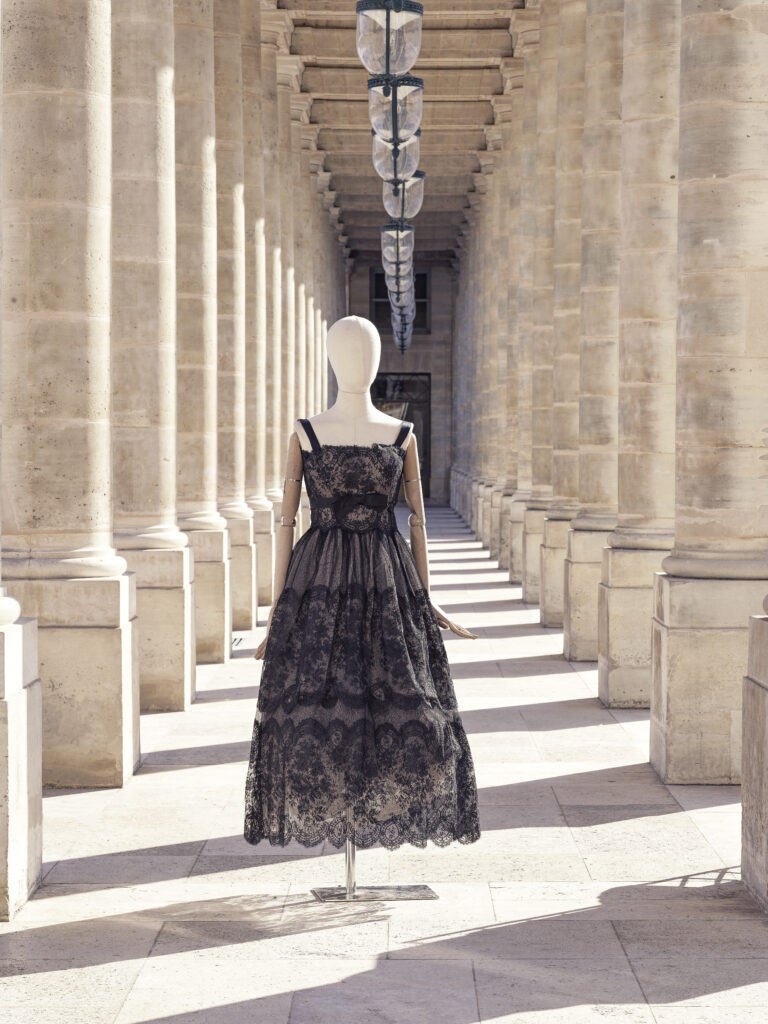
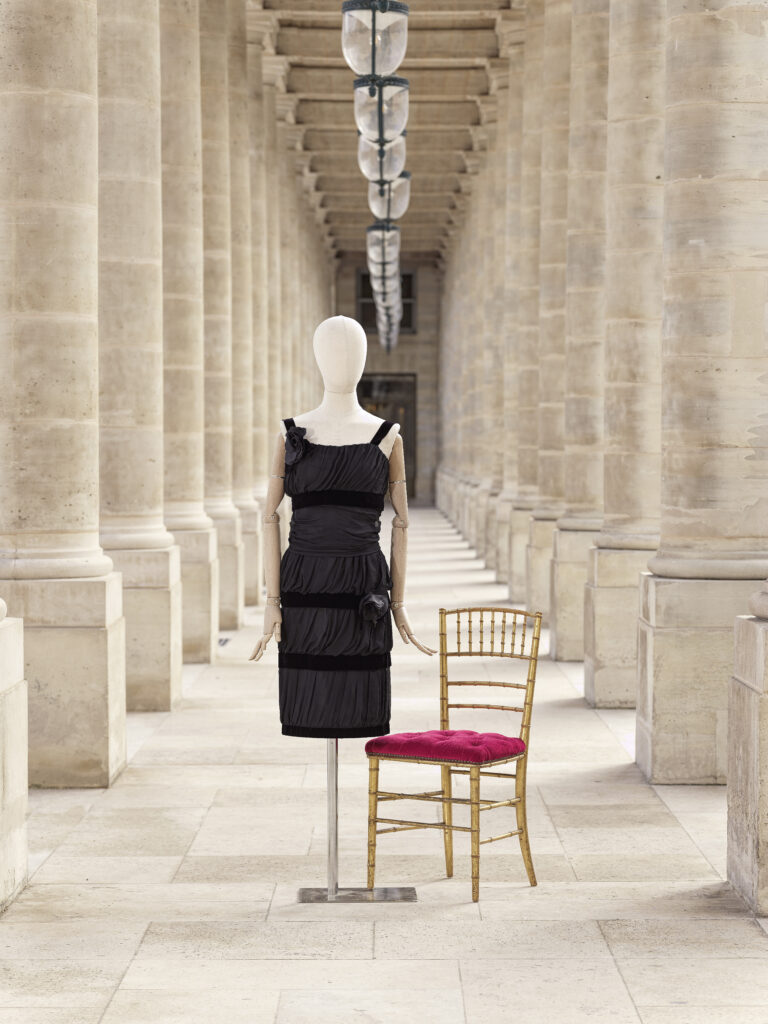
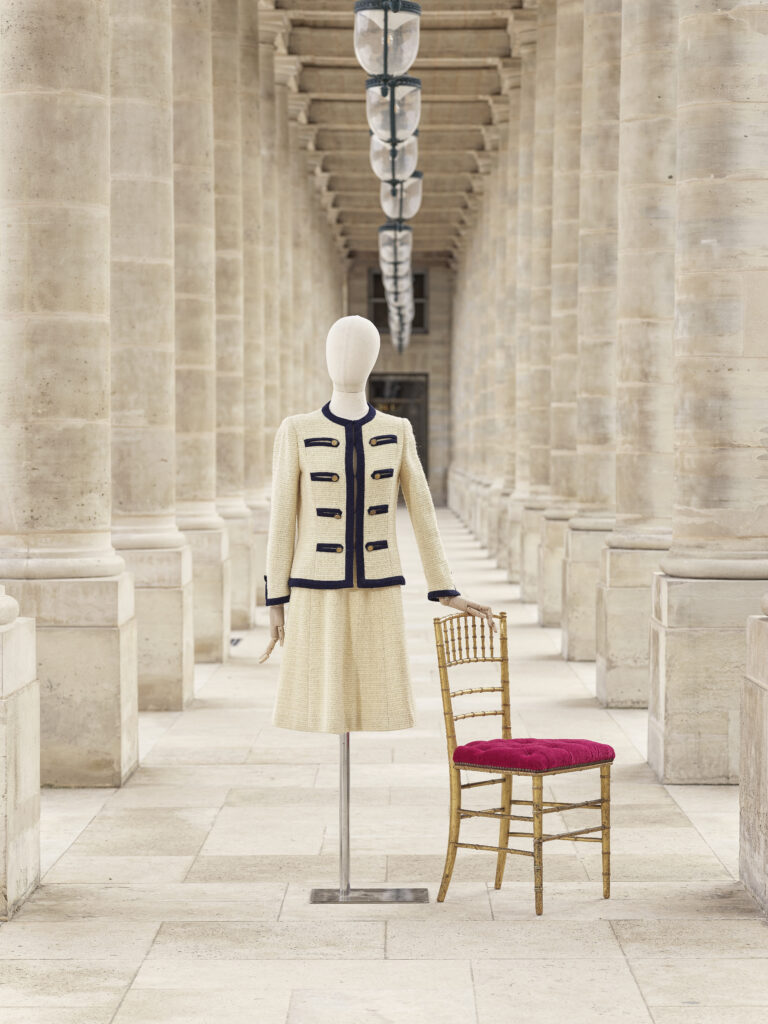
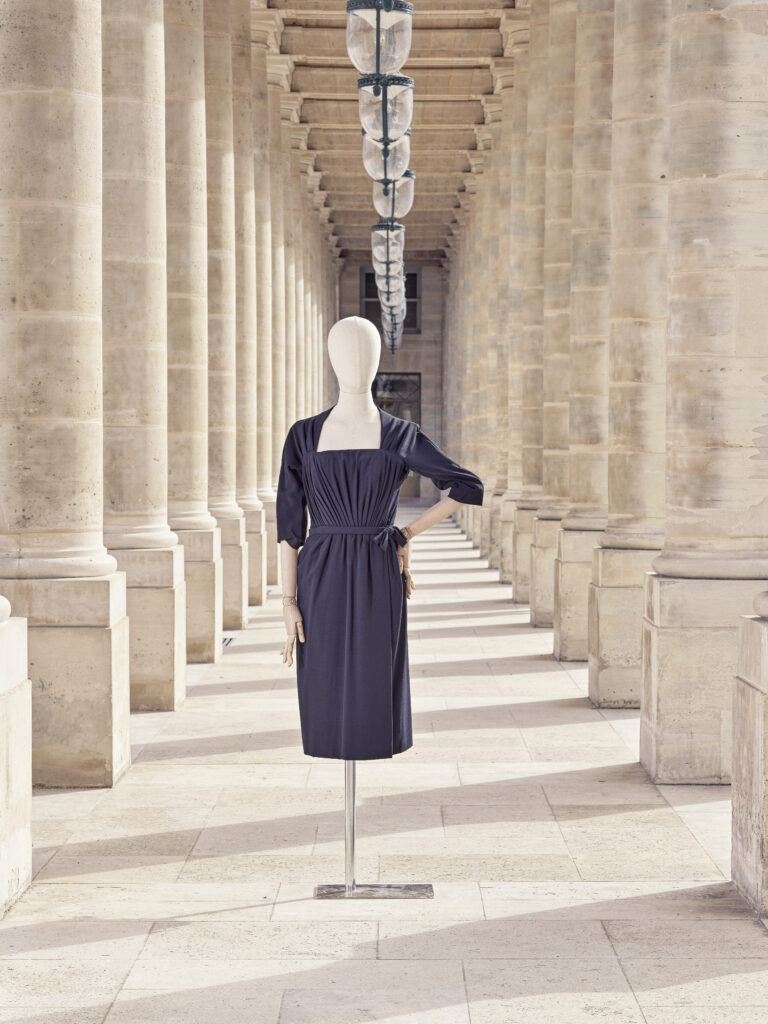
C.B.: Have you kept anything for yourself? Which piece?
D.L.: No, I don’t wish to keep anything, just the memories. I’m turning the page, I’m happy to offer to the greatest number of these remnants of a forgotten time. In the end, nothing should remain of this collection built over more than half a century. These dresses, I don’t wear them, I have them in my mind. So they will always be mine.
C.B.: Why are you stepping out now, knowing that vintage fashion and haute couture are surging in popularity?
D.L.: After more than 50 years spent at the Palais-Royal, promoting French luxury and craftsmanship, offering my clients from around the world the best of what Haute Couture has to offer, I’ve decided today to say goodbye to this profession that I love so much. I feel a bit disconnected from this world now and want to enjoy my time with my friends.
C.B.: What is the most surprising story or memory behind one of your pieces?
D.L.: It was in 2005, early December. I was with François, my loyal assistant, and we were setting up the Christmas window display. A woman came in with a dress wrapped in a sheet, like in a shroud. She pulled out a magnificent Dior dress, embroidered by the House of Rébé. “The Dior Museum didn’t want it. Are you interested?” she asked me. When I saw the dress, which I of course knew well, I bought it. It was immediately displayed in the window, and a few days later, a team of American stylists asked me for the price. I told them it wasn’t for sale, that it was part of my collection. They were tasked with finding an evening dress for the Oscars for an American actress who had had an issue with her Chanel dress, which had already been loaned to another actress. She had reportedly told her stylist team: “Figure it out, go to the Palais Royal, and find me a dress that’s unique.” I sold them the dress and even had to sign a confidentiality agreement. It was for Reese Witherspoon, who won the Oscar for Best Actress in 2006 for her role in Walk the Line.
C.B.: Some of your clients belong to the jet-set and Hollywood elite. But for someone outside this group who wants to invest in a beautiful haute couture vintage piece, what advice would you give them to find a piece that truly suits them?
D.L.: Above all, I would like to thank all my clients for their loyalty: Mademoiselle Deneuve, of course, Nicole Kidman, Naomi Campbell, Stéphanie Seymour and her children, Johnny Depp, Kate Moss, Sharon Stone, Kris Jenner, Sarah Paulson, Joanna Lumley, Demi Moore, Julia Roberts… I couldn’t name them all. The famous ones, but also the anonymous clients from around the world, who so effortlessly gave these extraordinary garments a second life.
I have been fortunate to meet incredible people! Azzedine Alaïa, Gianfranco Ferré, Miuccia Prada, Karl Lagerfeld, Monsieur de Givenchy, Zac Posen, Claude Montana… The Sozzani sisters, Manuela Pavesi, Anna Piaggi… But what was most remarkable in our exchanges was their breathtaking culture and knowledge.
Before purchasing a piece, you must observe its condition, study its provenance and labels, and listen to its story. You must also try it on carefully—and then care for it just as meticulously!
C.B.: Some say haute couture is like art and should be treated and studied as such. Others argue that haute couture is not art, as it comes to life only when worn. What is your perspective on these differing opinions?
D.L.: I just want to say that I love wearable clothing. My greatest pleasure is seeing a woman walk into the boutique and leave with the garment on her back. I appreciate the generation of women, aged 25 to 40, who value fine fabrics and buy vintage Haute Couture pieces the way they would buy a beautiful piece of jewelry. They see it as a treasure, they take it to a good cleaner, care for it, and don’t wear it just anywhere or anytime.
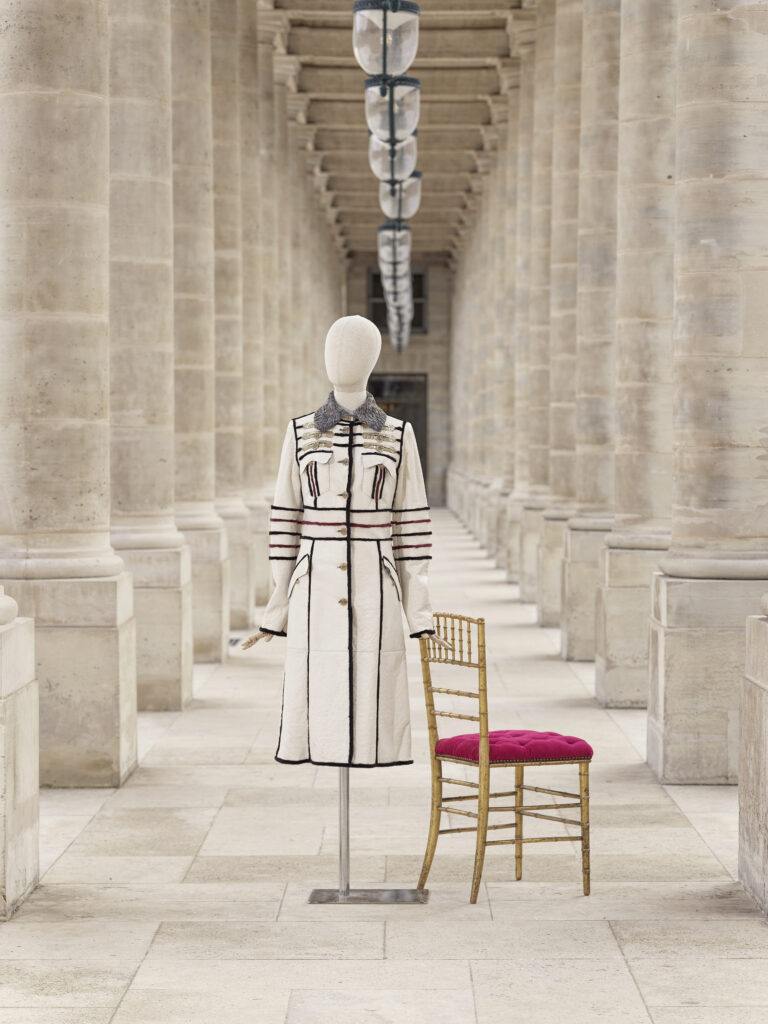
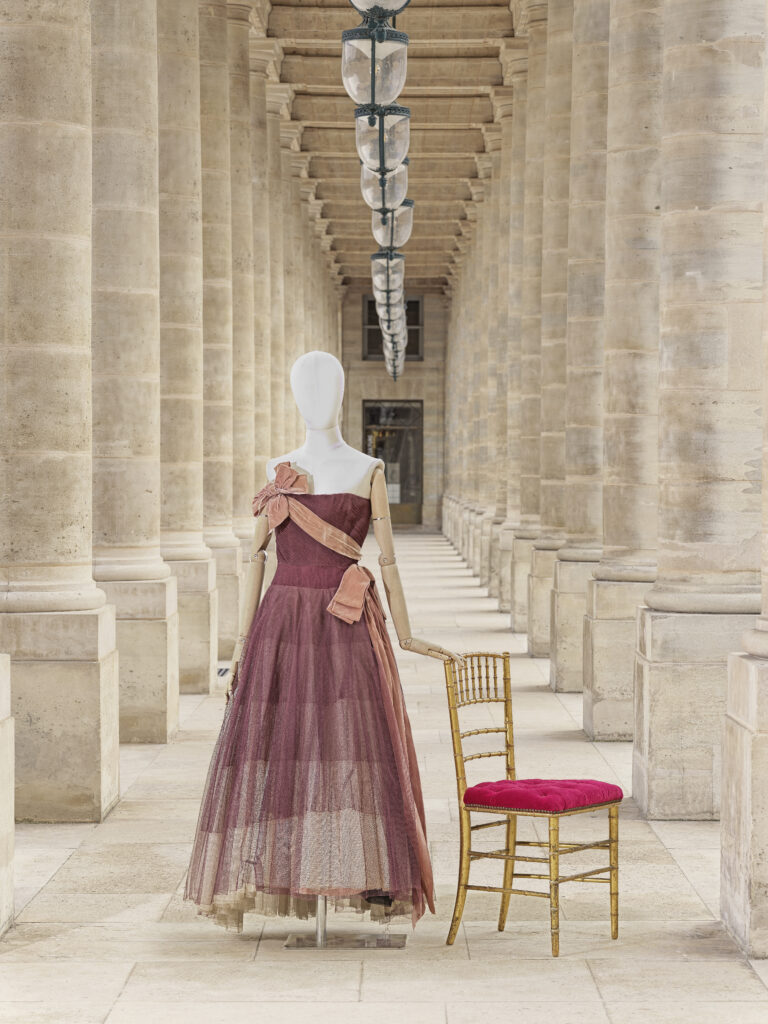
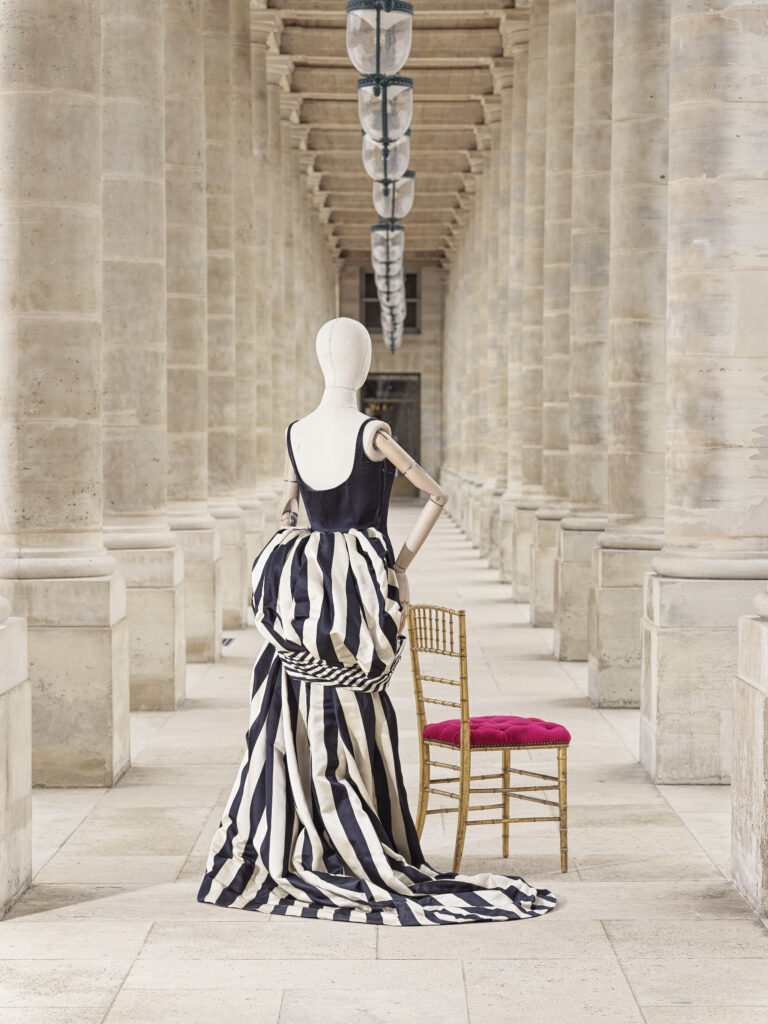
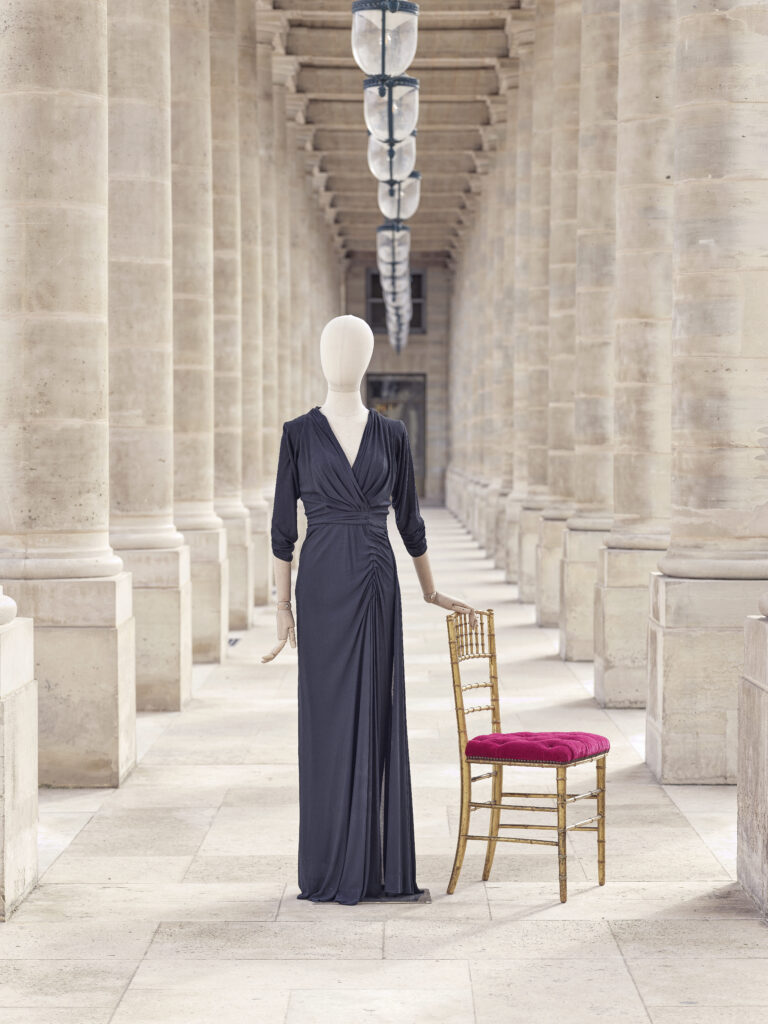
C.B.: We are currently in Haute Couture Week, where we’ve seen newcomers present their interpretations of couture, while heavyweights like Schiaparelli, Chanel, and Dior continue to uphold their legacies. In your opinion, what is the current state of haute couture?
D.L.: I must admit that I no longer feel connected to the fashion world. Haute Couture, as it once was, hardly exists today. There used to be tailored suits, luncheon dresses, afternoon dresses, cocktail dresses… Now, it’s only evening gowns. This is no longer my world. I feel like things have become somewhat chaotic, like the game of musical chairs in fashion houses, where just about anyone is put in charge of collections…
The clientele has also changed a lot. In the past, the people who came into my boutique knew couture, they knew the names of the designers, and they understood how a garment was made. Women knew how to slip into a dress. Now, they walk in wearing Uggs that they refuse to take off while trying on evening gowns. Brides come in and try on wedding dresses while keeping their pants on underneath. The fashion culture that once surrounded Haute Couture is no longer there.
C.B.: Is there a particular piece or brand from recent years that you believe will gain significant value as vintage in the future?
D.L.: I have immense admiration for Yves Saint Laurent and Dior. I also really like some of the younger designers, such as Stéphane Rolland and the Coperni duo. And among the major fashion houses, Jonathan Anderson is creating truly magnificent work.
C.B.: Vintage haute couture is more than just clothing; it holds the immense power to transport us to another time and tell stories of the wearers and the creators. These are pieces filled with meaning. How would you describe the importance of vintage pieces in French culture?
D.L.: When I started, what we now call vintage was known as retro. Saint Laurent launched this trend with his Libération collection, which he designed after having dinner with Paloma Picasso, who arrived wearing a floral crepe dress and a turban. He was completely taken by her look. The collection caused a scandal, but it also sparked a market that became known as retro fashion.
At that time, women were loyal to a single couture house—if a woman dressed in Saint Laurent, she wouldn’t wear Chanel, and vice versa. Haute Couture is the guardian of craftsmanship, working to preserve métiers that are inevitably disappearing. The creativity and success of French designers and brands are inseparable from the expertise of the ateliers and artisans who bring their visions to life—let’s not forget that. It’s not just about the artistic director; there are also the petite mains, the embroiderers, and the feather artisans, professions that are slowly fading away.
In the past, these garments were simply thrown away. Today, thanks to fashion houses that have established heritage departments, old designs are being repurchased and preserved. I remember when Gianfranco Ferré visited my boutique—I had a few of his Dior-era creations. He was deeply moved to see them there, knowing that his work would continue to have a legacy and permanence.
C.B.: What’s next for you? Are there any upcoming projects you’re excited to work on?
I’ve been lucky to be surrounded by incredible people like Azzedine Alaïa, Gianfranco Ferré, and Karl Lagerfeld… Maybe one day, I’ll share these stories in a book. But first, it’s time to take a break.